Herbarium
Newberry College Herbarium
Location Science and Math Building Room 223
Newberry College, 2100 College Street, Newberry, SC 29108
Curator: Dr. Charles Horn (E-mail: charles.horn@newberry.edu Phone: 803-321-5257)
Herbarium started: 1986
Index Herbariorum abbreviation: NBYC
Collection size: 21,500 (September 2014)
NBYC collection geographical scope:
A majority of the specimens are of collections in South Carolina and represent plants growing in the piedmont region of the state. There are a number of specimens from the piedmont of North Carolina and Virginia. Also included are some collections from the Bahamas, Belize, Dominica, and Guyana.
Important collections:
Flora of South Carolina
Voucher specimens for flora projects, including Lynch's Woods (Newberry County), Sumter National Forest (Fairfield, Laurens, Newberry, Union Counties), Saluda Shoals County Park (Lexington County), Little Mountain (Newberry County).
Collections of the following genera: Asimina/em>(Annonaceae), Dirca (Thymeliaceae), Heteranthera (Pontederiaceae), Rhododendron (Ericaceae)
Value of an Herbarium
An herbarium is a repository for pressed and dried plant material. These collections (or specimens) are a permanent record of where and when a plant existed in nature. Herbaria (plural of herbarium) have several important functions:
- Provides a reference collection for the identification of plants.
- Specimens provide information on the location and time a plant grew in the past. This information can be used to predict the future for a plant species.
- The herbarium is a repository for voucher specimens for flora and research projects; documenting the distribution of a species and recording information on what species are found at a location. For example, NBYC has specimens to document the plants found at Lynch's Woods Park in Newberry County. It may also be the sources for anatomical and morphological research.
- Serves as a base collection for teaching botany classes. Our collection is used in a number of botany classes I teach.
WHAT MAKES AN HERBARIUM COLLECTION VALUABLE?
Herbaria are of value because they contain many bits of information in a historical sense - plants collected at a particular location at a particular time. The oldest herbarium is the Naturkundemuseum Kassel, in the Federal Republic of Germany; it was established in 1569 (information from Index Herbariorum). In order for specimens to remain preserved for hundreds of years, several concerns need to be addressed relative to maintaining a collection.
- Plant material is collected, pressed flat and dried. This is usually with the aid of corregate cardboard and a heat source.
- Specimens are glued (or attached in some similar way) on sheets of approximately 11x17 inch paper. This makes for ease of reviewing the specimens, keeps all material together, yet visible, and documents a single collection.
- The collection needs to be preserved to prevent damage, thus are most commonly stored in air-tight cabinets. Several concerns are evident when specimens are not properly stored, including specimens loose color when exposed to light, changes in humidity can hurt the plants and glue, and of greatest importance, insects can damage exposed specimens.
- For convenience sake, the collection needs to be in an order so persons can find specimens quickly. Typically, specimens are either filed alphabetical by family, then by genus, or the families are arranged in systematic order using a recent evolutionary scheme.




